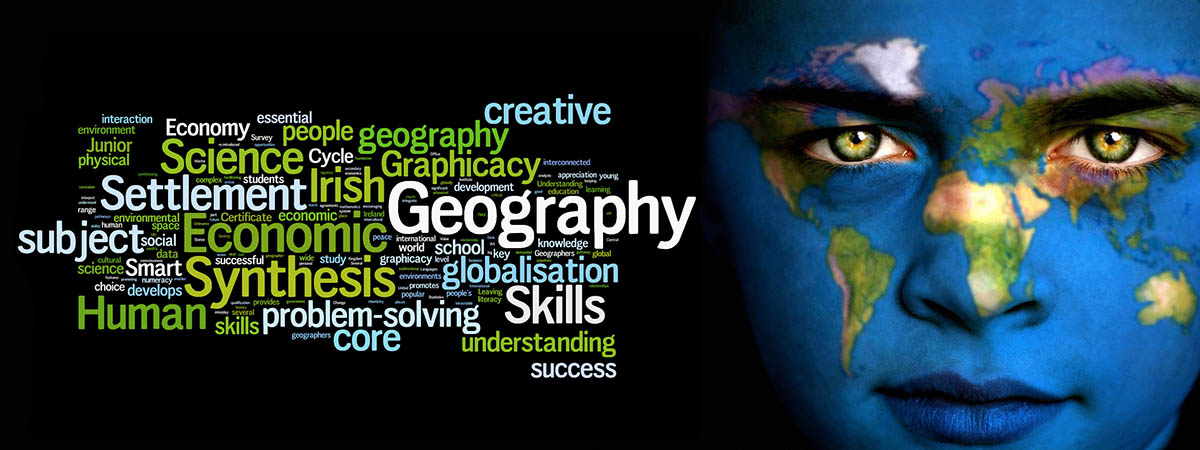Topical Exercises
Topical Exercises (at 14 pts each totaling 70% of your final grade).
There are five required topical exercises relating to the five classic themes of the course. All of the exercises are included in this packet. However, each one has a separate due date. There will be a grade reduction penalty for lateness. Any exercise may be turned in before the due date. Each exercise may be completed in 3 typed pages plus bibliography plus appropriate maps/illustrations.
The five classic and overarching themes of cultural geography as defined by the textbook are:
1. CULTURAL ECOLOGY. The study of the relationship between habitat (physical environment) and culture.
2. CULTURAL DIFFUSION. The spread of elements of culture from the point of origin to other areas.
3. CULTURAL INTERACTION. The relationship between various elements within a culture including political systems, religions, economic (business) systems and national identity.
4. CULTURAL LANDSCAPE. The visible human imprint on the land.
5. CULTURAL REGION. A geographic unit based on characteristics and functions of culture.
-
Exercise 1 Human Adaptation (Cultural Ecology)
Select two (2) areas from the list below (but only one area from any one continent). For each area selected (a) incorporate the following points into your discussion: location on earth; traditional/historic ethnic geography of the area; cultural identification including language and religion; traditional housing, clothing style and food; aspects of acculturation and assimilation over time; accessibility to the outside world and movement within the area; and economic base; (b) point out the similarities and/or differences of the two culture groups selected; and (c) include two maps for each area - a continent locator map and an annotated map showing details the area being discussed.
Select 2 from the following unique physical areas:
- High elevation plateau or mountain basin (extreme conditions of altitudes > 9,000 ft.)
- Hot summer desert area (extreme conditions of heat and dryness)
- Middle latitude plains or steppes (marked seasonality on a flat surface)
- River delta or area of coastal barrier islands (relationship with the world of water)
- Steep-sloped landform area (rugged expanse with limited flat land)
- Sub-polar tundra region (extreme cold in areas of variable periods of light and darkness)
- Tropical rainforest region (extreme conditions of heat and humidity)
ADD A BIBLIOGRAPHY OF SOURCE MATERIAL at the end of your write-up.Click here for Exercise 1 Guidelines
DUE DATE: Thursday, September 14, 2017
-
Exercise 2 Documenting the Spatial Spread of Cultural Phenomena (Cultural Diffusion)
(a) Select a topic of interest to you and through a series of maps show its linear (surface) and temporal (time) movement from point of origin to present day spread. NOTE: You may photocopy a map sequence from an atlas or book, download and print a map series from an internet source or compile a map sequence from several sources combining photocopies and downloads. (b) Explain what each map shows. (c) Analyze the path of movement and means of diffusion.
ADD A BIBLIOGRAPHY OF SOURCE MATERIAL at the end of your write-up.Click here for Exercise 2 Guidelines
DUE DATE: Thursday, October 5, 2017 -
Exercise 3 Complexity of Cultural Areas (Cultural Interaction)
Throughout history and including the present, there have been contact between people of different cultures and clashes within cultural groups. Around the world, as noted in the textbook readings, there is an interdependence of cultural phenomena where the rise and fall of practice and change in one place or setting has had a catalytic affect bringing change to the groups coming in contact with each other. (a) Select any two of the following time periods and discuss geographically a “cultural interaction” that occurred. (b) In your discussion include local evidence of original culture groups, presence and influence of the outside groups that occupied the area in the past, and any present-day characteristics that support the arrival of new cultural influences. (c) Include appropriate maps to show geographic areas and sequences.
Select any 2 time periods:
- Spread of the Roman Empire (500 BC - 400 AD)
- Moorish invasion and occupation of Spain (8th century interaction of Africa and Europe)
- Marco Polo’s travels and the Silk Road (13th century interaction of Asia and Europe)
- Portuguese voyages of exploration (15th - 16th century spread of Portugal's colonial empire)
- British colonialization of Australia (late 1700s)
- Tribal activities in Oceania (break of isolationism in the late 1800s - early 1900s)
- Communism and the Soviet bloc (spread of Marxist ideology in the 20th century)
- Ethnic rivalries in Africa (tribal clashes in the early 21st century)
- Present day immigration issues in the European Union (interacting with refugees and people of different cultures in the 2010s)
ADD A BIBLIOGRAPHY OF SOURCE MATERIAL at the end of your write-up.
Click here for Exercise 3 Guidelines
DUE DATE: Thursday, October 26, 2017 -
Exercise 4 Associated Images (Cultural Landscape)
(a) Search the travel and tourism web sites for 8 examples of cultural/ethnic destinations from the world regions listed below. Look at river cruises, train and bus tours, and cruise lines offering land side trips (sea/land packages). Look for images that express the essence of an area’s cultural landscape, as the Manhattan skyline, Central Park or Statue of Liberty do for NYC. (b) Create a list of locations with images from different areas of the world that are characteristic of those locations. (c) Next to each image provide the details of the location shown and explain how the natural setting or associated artificial landscape came into being, i.e., the story behind the scenery or how the image displays the essence of the area's culture. Choose from any 8 of the following world regions: A. North America (not Mexico or Hawaii or NYC), B. Central America/Caribbean, C. South America, D. North Africa/Southwest Asia, E. Sub-Saharan Africa, F. Europe (not Russia), G. Russia, H. South Asia, I. Southeast Asia, J. East Asia, K. Australia/New Zealand, and L. Polynesia/South Pacific.
ADD A BIBLIOGRAPHY OF SOURCE MATERIAL at the end of your write-up.Click here for Exercise 4 Guidelines
DUE DATE: Thursday, November 16, 2017 -
Exercise 5 My Neighborhood (Cultural Region)
(a) Select a neighborhood within or around NYC with which you are familiar. The neighborhood could be where you now live or grew up or have relatives. Do the following: (b) Walk or drive the area. (c) Describe it in terms of a culture region. What makes it unique? What distinguishes it from surrounding areas? Who are the people who live there? (How do you know that?) What are the characteristic sights, smells and sounds of this neighborhood? What type of housing predominates? Is it convenient to shopping and transportation? How has it changed over time? (You may haveto ask an 'old timer!') (d) Map it. Provide a local street map of the neighborhood being discussed plus a map of the NYC area to show where this neighborhood is located. Outline the boundaries of the neighborhood on the street map. Locate on the map places that are familiar to you as your home or grocery story. Annotate places in the neighborhood that give it its character as the main commercial area, local houses of worship or cultural centers, frequented stores/restaurants, parks and landmarks. (e) Document it. Attach photographic evidence of the uniqueness of the area as mentioned in (b), (c) and (d) above.
ADD A BIBLIOGRAPHY OF SOURCE MATERIAL at the end of your write-up.
Click here for Exercise 5 Guidelines
DUE DATE: Monday, December 7, 2017

